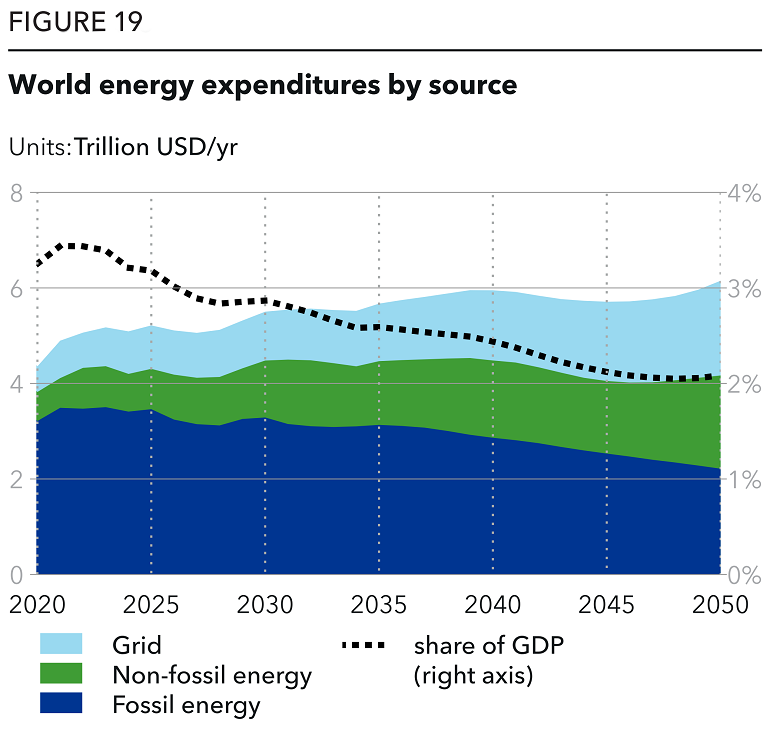The roll-out of renewables and grid build-outs will require very large upfront investment. Some therefore consider the transition to be ‘unaffordable’. Our results suggest the opposite.
Our forecast shows energy costs remaining stable and the share of energy expenditures in global GDP declining – from 3.4% in 2021 to 2.1% by mid-century. The energy transition thus involves a substantial green prize, paying dividends to society for generations to come, even before factoring in the avoidance of incalculable costs associated with climate damage.

Total world energy expenditure was USD 4.9trn in 2021. We project world energy expenditure to increase 26% to USD 6.2trn by 2050 – far below the 107% increase in global GDP over the same period. The unit cost of energy will stay stable around 11-12 USD/GJ even with a fundamental reshuffling in energy expenditure by source. Between 2021 and 2050, fossil expenditure will reduce 40% in USD terms, non-fossil will triple, and grids will also almost triple.
Our forecast includes shifts in cost of capital across various energy sources and regions. Although there are regional variations, the cost of capital is generally steepest for coal, increasing for oil and gas, stabilizing over time for variable renewables and nuclear, and declining for low-carbon and renewable hydrogen production. We project a structural shift away from fossil CAPEX and OPEX from the 2030s. Renewables CAPEX is almost twice as high as OPEX, despite the uninterrupted decade-to-decade increases in OPEX.
While the transition is affordable globally, expenditures on the provision of energy are not market prices paid by the consumer, which include margins, taxes and/or subsidies – and upfront investments in end-use items like EVs and heat pumps. However, we foresee that household energy expenditures in Europe and North America will remain high until energy supply shocks are alleviated around 2025, then returning to 2021 levels, in nominal terms. Subsequent decades will see stabilization of household energy expenditure at levels 10% less on average than in 2021, and gradually declining to 30% less by mid-century. This pattern does not apply to all regions, e.g. in the Indian Subcontinent, increasing electrification, especially with air-conditioners and higher energy consumption, sees its household energy expenditure gradually increasing to 30% above 2021 levels by mid-century.